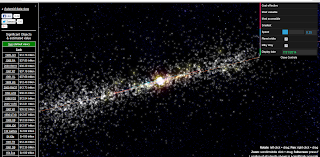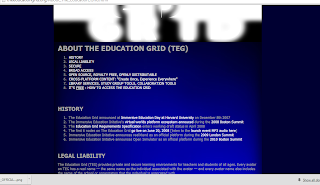These are screenshots of a virtual library I created in an online world from a website called Meshmoon. It is a final exercise from the Immersive Education course that I am taking at Boston College. The course is called Discovering Computer Graphics. For details, visit the immersive BC portal at http://ImmersiveEducation.org/@/bc
In the above screenshot, I am linking personal images in my Library to websites that are of interest to me.
In the screen shot above, I am creating an in world webpage that can be viewed in the world or can be used to bring a user to the website in a new window.
In the above screenshot, I am editing an object that I created in the world so it may fit a video that I will embed into it.
This is a screen shot of putting a website into my world.
This is a screen shot of me adjusting the position of the previous website.
This screenshot shows me editing the position of an embedded video.





















































